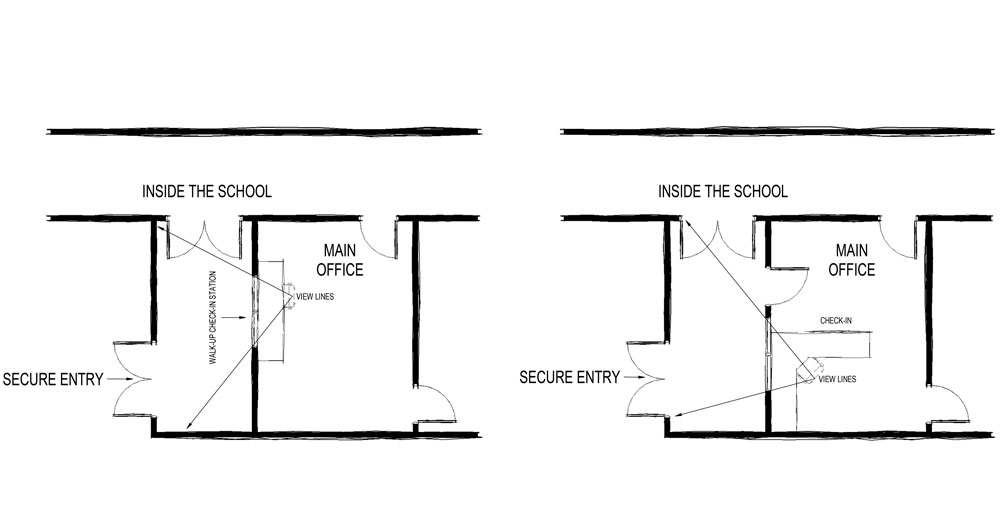Building Value: Considerations for secure entry improvements

2 years, 4 months ago
By Cindy Larson, Project Manager/Licensed Architect
Carl A. Nelson & Company
Many of our K-12 clients are interested in creating a more secure space for students in existing and new schools. Security often starts with controlling how students, staff and visitors are able to enter and exit the building. A common first step is to limit the number of locations where people can enter a school. Many exits are required for life safety in case of a fire; however, the number of entrances can be confined to just one.
Doors
To secure egress points, the exits can be monitored with door position switches to alert school staff if a door is propped open. Sometimes it makes sense for staff to be able to enter other exits. In this case, card readers can be used. The door access system can keep track of who uses the cards and when.
Once you have created a single entrance for the students and most staff, then the design of the secured entry should be thoughtfully planned to balance defensibility, functionality and budget. The designated doors at the secure entrance can be put on a timer, allowing them to stay locked during most of the day, but unlock at strategic times to allow normal flow of students during high traffic times such as in the morning or during passing times if movement between buildings in necessary. This timing is based on what makes sense for the school.
Sight lines
Once the secure entry doors are locked, then a staff person or School Resource Officer (SRO) is the next line of defense. This person needs to be able to see who is requesting entry and determine if that person is safe to let in. This can be done with cameras or windows, or a combination of both. Most of the time, the person being let in is a student who has arrived late to school.or is returning from an appointment. Using technology is the safest approach, but there is a trade-off in convenience versus a friendly interaction. A window line-of-sight promotes interaction between the student and staff, but if the person requesting entrance is dangerous, the staff person needs to get out of the would-be intruder’s view for their own protection.
Window glass
Some schools have proposed to have bulletproof glass for extra protection. While this seems to be a common-sense approach, once you start looking at bullet resistance, it becomes an expensive thread to pull on. If you make the glass bulletproof, then do you also make the walls and doors bulletproof in the secure entry? If the secure entry is fully bulletproof, then what about the windows and walls in the classroom or hall next to the secure entry?
Technology
Additional features in a secure entry can include panic buttons. These are buttons that can be connected to the fire alarm system and emit a pre-recorded message, of the school’s choice, to alert the entire school when a situation is occurring. These buttons are often under a desk or on a wall and can be in more locations than just the secure entry.
The secure entry design usually funnels students through a hall-like space. This is an ideal place to install a metal detector, if desired. A staff person would need to be available to pull students aside and do a check, if the metal detector does go off.
In conclusion, the balance between security, cost, and functionality are all things that need to be considered when creating a secure entry, and solutions are unique to each school.
•••
In Building Value, Carl A. Nelson & Company’s team of construction experts will address topics aimed at helping educational facility owners to get the most out of their projects before, during and after construction. Have questions? Submit it by email to canco@carlanelsonco.com for a prompt reply and possible use as a topic in an upcoming installment.

The sketches above show two different examples of secure entries, including door placement and sight lines for school staff to supervise the comings and goings of students, staff and visitors. (CANCO illustrations by Cindy Larson)